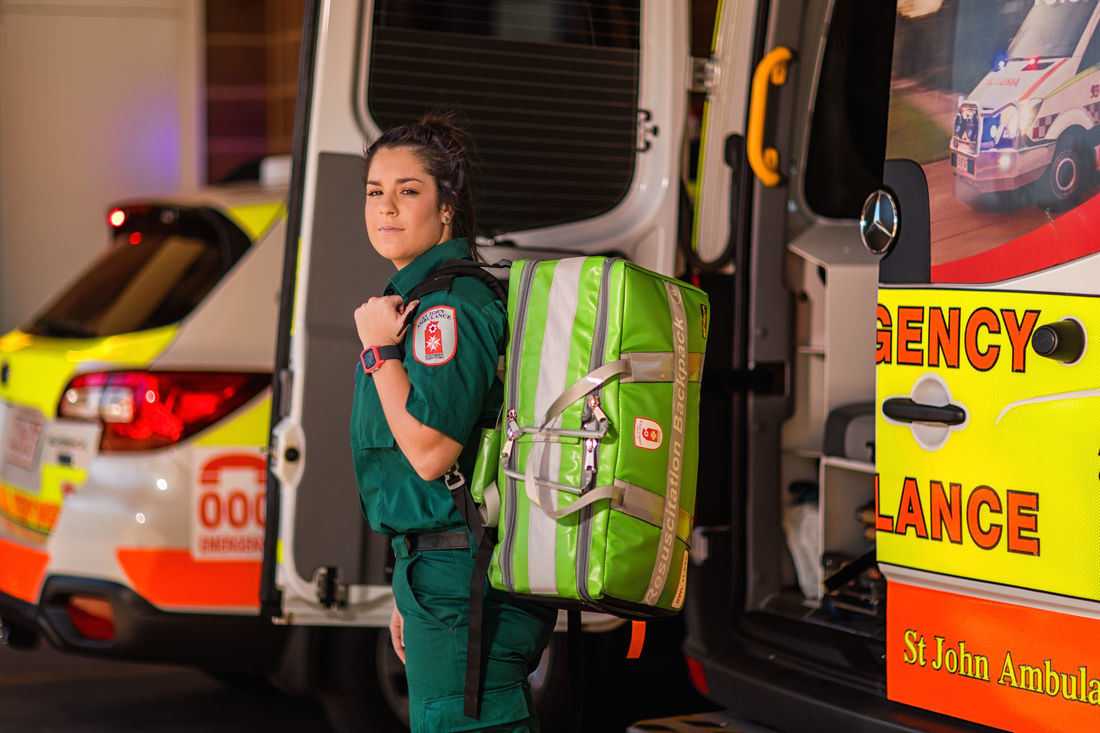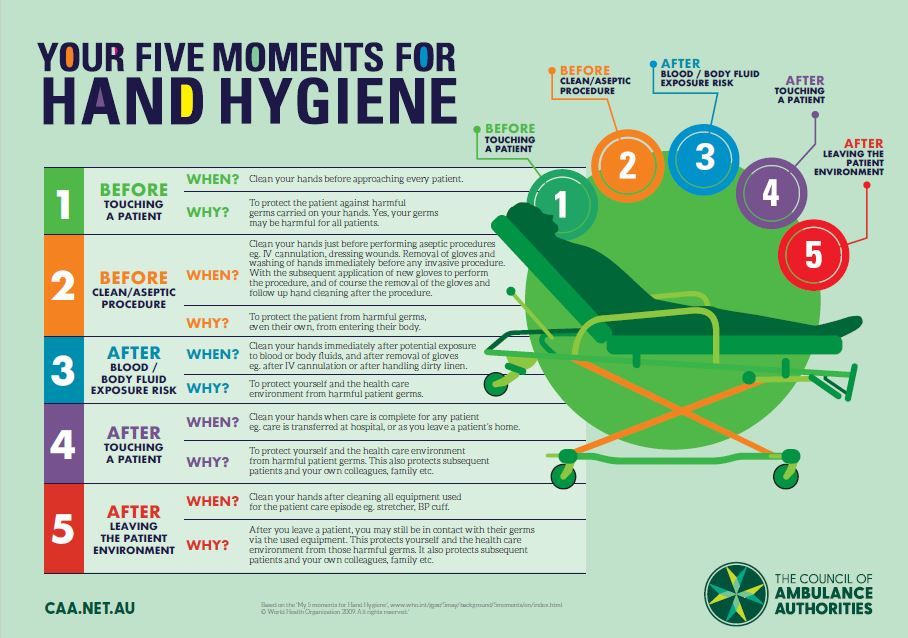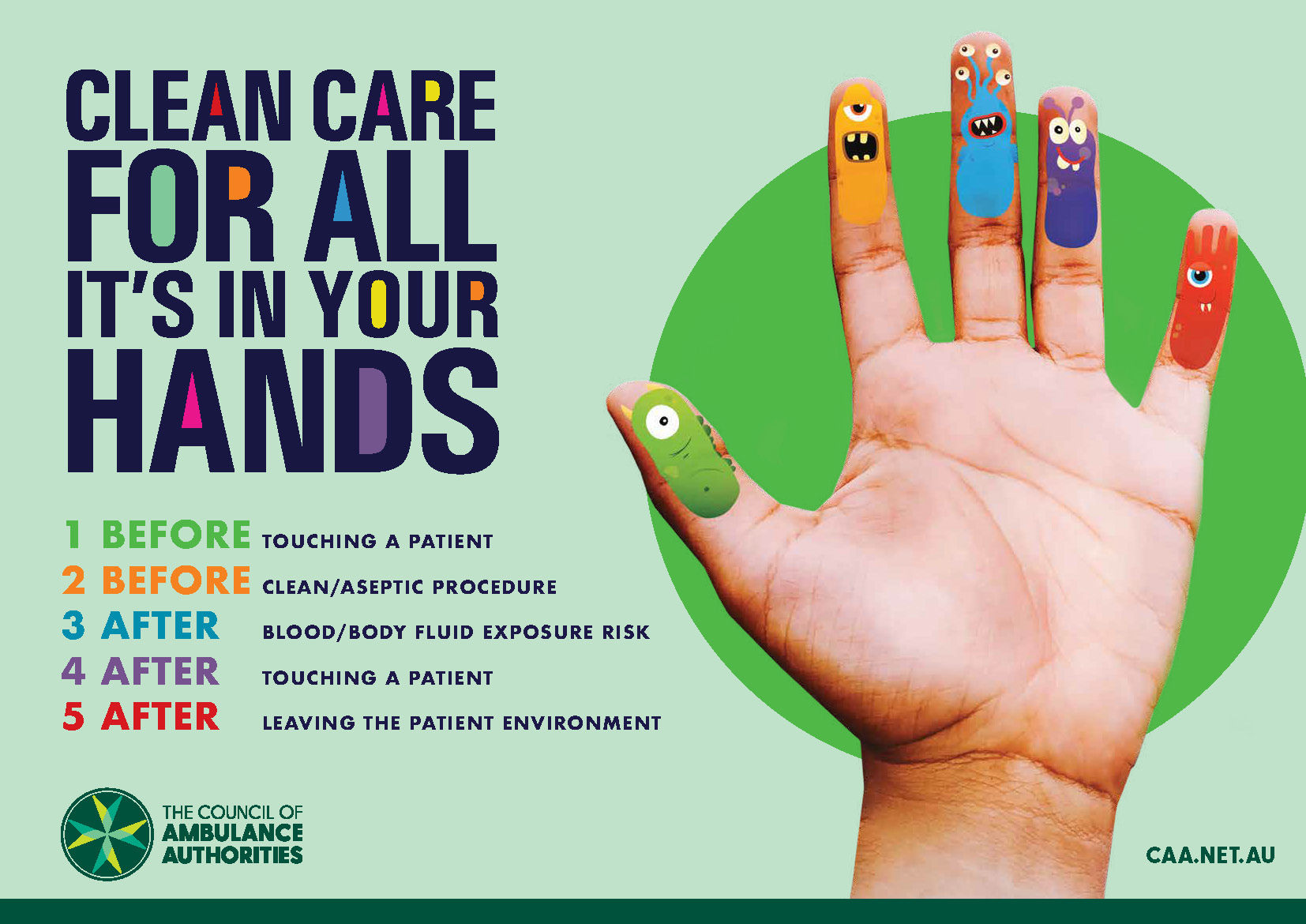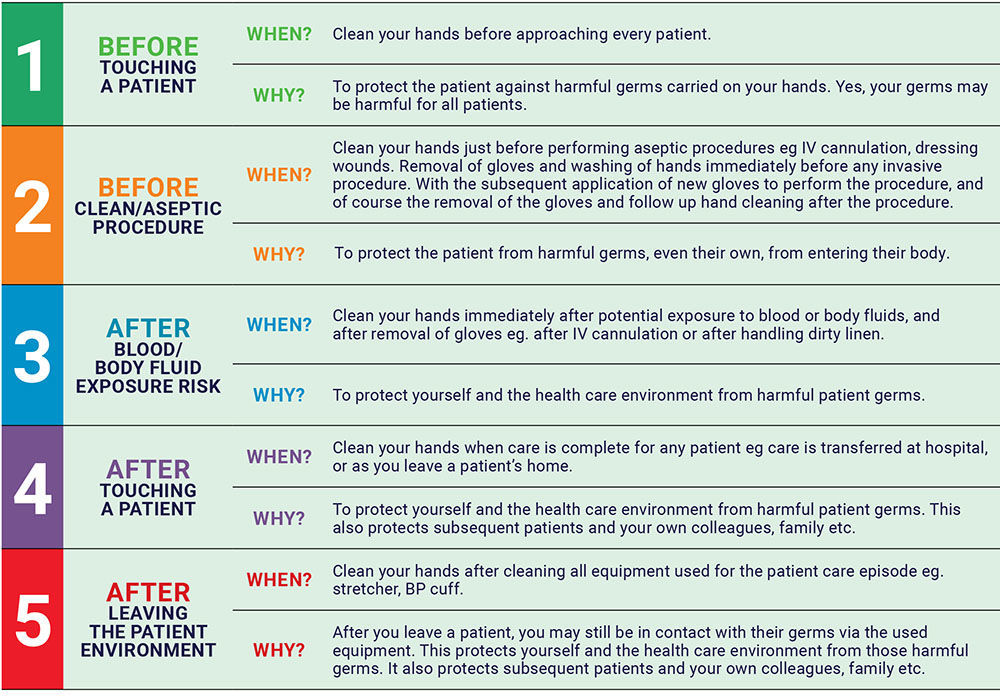
Take Five for Hand Hygiene
| Take Five for Hand Hygiene is an annual campaign created by the Council of Ambulance Authorities to highlight the importance of hand hygiene during paramedics time with patients. The Bad Practice Hand Hygiene Video (below) shows how far the spread can reach through the use of a single pair of gloves. In this video, the CAA takes you through an ambulance trip from when a crew first arrives in a patient's home to where they are handed over to the hospital emergency department. It shows the variety of people the crew comes in contact with and how not changing gloves aids in the spread of infection. CAA would like to thank St John NZ for producing the video. |  |
Zones Posters
 |  |  |  |
 |  |  |
Clean Posters
 | |||
Moments Posters
 | |||
To download the high resolution versions of these posters, contact us at admin@caa.net.au.


5 PRINCIPLES TO REMEMBER:
- 1 in 10 patients get an infection while receiving care
- Hand hygiene products should be carried at all times during a shift
- Use gloves when in contact with blood or body fluids – apply hand hygiene steps when gloves are removed
- Germs are usually invisible even when hands appear clean
- Hand hygiene is the single most important factor in reducing health care acquired infections
WHY IS 5/5 HAND HYGIENE SO IMPORTANT?
In the pre-hospital setting, poor hand hygiene can cause infections, which in some circumstances can lead to death.
Emergency medical workers, including paramedics who consistently encounter many patients every day, risk transmitting harmful microbes without properly sanitized hands.
Contamination can occur from patient contact or via the environment in which the patient is being treated, including an ambulance.
The spread of infection can be stopped by complying with the five moments of hand hygiene before and after every patient encounter.
The five steps will protect working paramedics, patients and the area of treatment from the spread of germs.
Five Moments for Hand Hygiene help keep paramedics, patients and their families, safe from infection.
CLEAN CARE FOR ALL - IT'S IN YOUR HANDS
Hand Hygiene is a life-saving factor in pre-hospital care. CAA, in conjunction with the World Health Organisation (WHO) is raising awareness of the importance of hand hygiene in preventing the spread of disease.
While five moments of hand hygiene apply across the health sector, these moments have been amended slightly, in recognition of the settings in which paramedics work.
GLOVE USAGE
Overuse of gloves can reduce hand hygiene and increase cross-infection.
Gloves do not have to be worn for every moment when in contact with a patient.
If gloves are worn continuously, it means hands are not cleaned at appropriate times and the risk of infection increases for paramedics and patients.
Gloves should be worn to primarily protect paramedics from patients’ blood and body fluids – not their skin.
